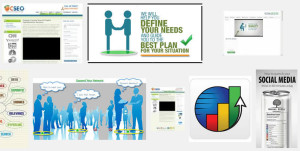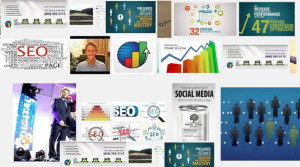Sharing has been around for quite a while. People have shared through word of mouth or showing what they have experienced to their friends and family. Through social media we can do this very procedure at a quicker rate. Social media has made sharing articles, videos, and documents easier than ever before. An interesting article or inspiring video is only one click away. With a diverse ecosystem, sharing has become embedded in our culture. We had seen sharing steadily evolve from something found on local news to national headlines. Having now mastered the speed at which something can become popular, what is next for the sharing culture?
The next frontier for sharing is organic sharing. In organic sharing, sharing is no longer just a ‘like’ or ‘share’ button on a webpage, it is automatically generated on people’s profiles. We have already seen this in Facebook or news publications that show relevant material to your search. The difference in organic sharing is that it is fully customized and tailored towards your personal profile. Most generated material is generic and is only based on your search for one particular topic or general interest. Organic sharing would develop a whole set of topics that would compile information from various sources into one easily readable format. Trends in data, native advertising, and technology are pointing towards this development. This also translates into how technology will format around this concept.
Why it matters
Most of use a search engine to find an answer or product information. The problem in searching for a particular piece of information is that it can take some time to find all the answers. This new way of sharing is aimed at already giving you the information without even asking. A buyer looking for information on a particular product needs only to look at material automatically generated to get all the information needed to make a purchase. For marketers this ability to solve a question before it is posed is powerful since it already saves time in finding people with that particular endeavor on their mind. For consumers this the most efficient way to search the web. It would only take a brief few minutes to find all the information needed in the day.
Currently data collected is based around what the user has looked up while generating material on what is. The material however is not personalized and just creates bridges from one point to another. New organic sharing would have users sending one point of interest to their platform that would later bundle a group of other material based on your personal profiles. As you search for new items, the system would learn to add them as a major factor to your internet profile.
Implications on new sharing
To fully achieve this concept there would be some implications on how data is collected and used. For consumers personal data including user preferences is viewed as confidential. This creates a dilemma on both sides. The marketer needs to have data in order to have compelling content while consumers wish to stay anonymous when going online. Beyond the ethical questions there is an issue of usefulness. Individuals using social networks would find the organic sharing very important, however users who are not actively sharing or do not have many networks in social media, may find organic sharing useless.
In order for the system to work, the user has to share or view a wide array of material for it to generate relevant/meaningful material tailored towards their interests. The system would not add anything relevant since the searches themselves are from point A to B. Effectively this would be cutting out a large portion of users who could benefit from this type of search. Marketers want to reach the biggest audience possible and if limitations on searches are limiting the number, then perhaps the technology needs to be looked at.
Are we there yet?
This very idea of creating organic sharing is not far away given the development of sharing in social media. Currently we can create relevant content based on what people are clicking. Most tracking tools tells us exactly where most of the visitors are from and what they are viewing. Based on this type of information, we already know what visitors like. What we don’t truly know is what kind of visitors are coming to the source. Knowing what type of visitor the user is, gives us the information we need to truly personalize the entire experience.
We can personalize the experience, but we don’t have the ability to tailor an entire experience around the user’s entire history online. Another area that has made a great step forward is the creation of a uniform format. There has been development in native advertisement that has been working on how users see advertisement in their social media feed. Native advertisement is aimed at creating an ad that conforms to the structure of the social media platform. People are hesitant to click on ads when they see them in a typical banner space. Ads in the native advertisement put themselves in the format of people’s news feeds. People still notice that the post is an ad, but the subject matter is less threatening since it’s tied to with related material.
For more information please visit Orange County SEO.

